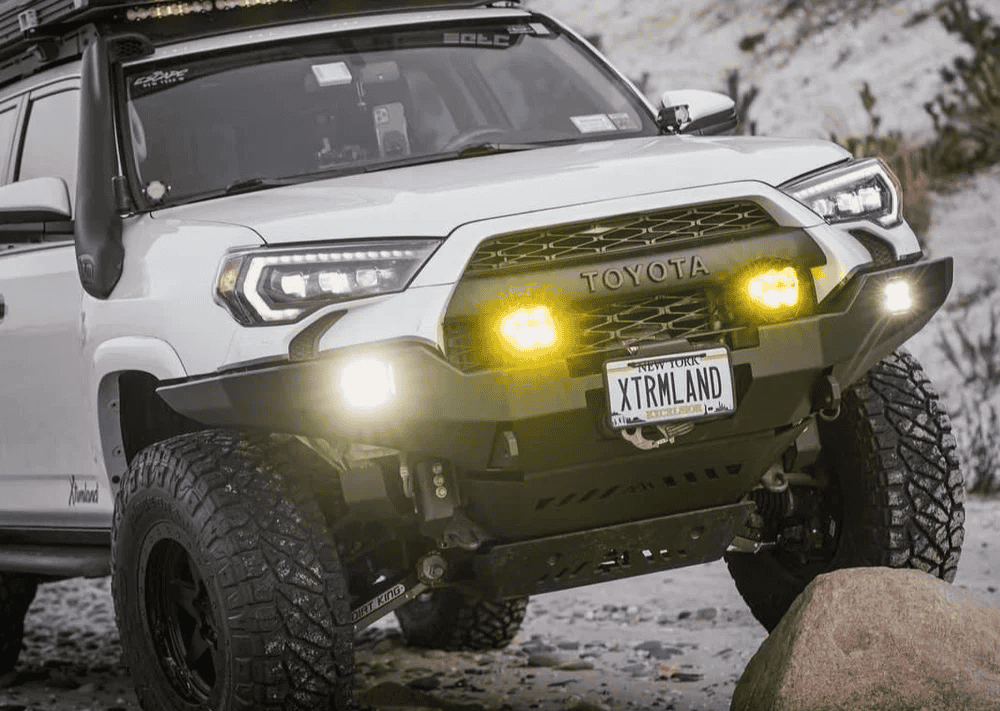Overland Vehicles

Expedition trucks carry aggressive tread, skid plates, snorkels, roof gear, and stout drivetrains. Each choice adds capability and also new sources of vibration, resonance, and wind. Tire lugs drum through the floor and wheel wells. Roof racks and light bars disturb airflow and generate tones around the cab. Diesel clatter and driveline harmonics seep through the firewall and floor. On long tracks, that constant noise raises fatigue, masks radio calls, and makes cabin conversations harder than they should be.
The goal of acoustic treatment is not silence. It is to cut the peaks that wear you out. When you remove structure borne resonance and block airborne noise paths, the cabin feels calmer at any speed. That means clearer comms, more relaxed driving posture, and audio that does not need to be cranked.
Not every foam or mat belongs in a truck that lives in dust, heat, and river crossings. The core kit typically includes four material types that each solve a different problem.
Start with constrained layer damping tiles on large, flat metal where ringing occurs. Coverage around one third on those panels is often enough to stop resonance. Next, add a thin closed cell decoupler to prevent panels and trim from touching and buzzing. Then use a limp mass barrier such as mass loaded vinyl, decoupled from metal by that foam, to block airborne noise. Finally, place selective absorbers in enclosed cavities and headliners to soak up reflections where moisture will not linger.
Mass barriers work because weight resists sound transmission, but payload matters on remote trips. One pound per square foot material over a full cab can add several dozen pounds fast. Plan where barrier brings the biggest return such as the floor, back wall, and firewall. Choose adhesives and foils rated for cabin temperatures well above summer heat. Look for components that meet FMVSS 302 for flammability. Avoid asphalt based products that can soften in the sun.
Under the body, elastomeric coatings on wheel wells and floor pans reduce drumming before sound reaches the cabin. Inside doors, treat the outer skin through access holes and keep window tracks clear. Always preserve drain paths and harness routing.
Preparation sets the tone for results. Clean with isopropyl alcohol, remove loose paint, and address rust before any mat touches metal. Roll firmly to bond damping tiles and eliminate trapped air. Decouple the barrier rather than bonding it directly to steel. Allow for serviceability around fasteners and grommets. Respect airbag paths and wiring channels, and maintain ventilation designed by the manufacturer.
A simple sound level app provides useful before and after data. Take baseline readings on a familiar stretch at steady speeds with A weighting. After each treatment stage, repeat the same route to quantify gains. A three to six decibel cut is clearly noticeable, and reductions around ten decibels feel like the cabin has taken a deep breath. Listen for remaining tonal peaks and chase them with targeted damping rather than piling on weight everywhere.
Expedition use brings unique challenges. Snorkel plumbing can transmit intake noise into the A pillar. Roof crossbars may sing at certain speeds until a fairing changes the airflow. Air compressors and inverters benefit from rubber isolation mounts and enclosure lining. Camper boxes act like giant instruments and respond well to the same damping and decoupling formula used inside the cab.
Comfort on the trail should not come at the cost of reliability. A well planned acoustic package respects water management, service access, and safety systems while making the truck feel settled over long distances. When sound control is designed alongside cabinetry, power systems, and storage, every layer supports the next and weight stays where it pays off.
If you are planning a full overland build, explore our overland rigs to see how cabin comfort fits into a complete system. For tailored upgrades that pair acoustic treatment with suspension, armor, and power integration, our custom overland upfit approach delivers a coherent package. Curious about process, quality control, and client experience before you commit a rig to the shop floor, visit why choose OZK Customs.
You know the routes you chase and the gear you carry. Tell us your noise hotspots and comfort goals, and we will blueprint a layered solution that keeps fatigue down and focus up while protecting payload and service access. Our team folds acoustic science into expedition ready builds, so you roll out with a truck that sounds as capable as it drives.
Ready to quiet your expedition truck the right way? Our team integrates acoustic treatment with power, cabinetry, and overland systems in one clean build. Tell us how you travel and we will design a cabin that rides quieter, cooler, and ready for the long haul.
ADDRESS:
6159 E Huntsville Rd, Fayetteville, AR 72701
PHONE:
(479) 326-9200
EMAIL:
info@ozkvans.com